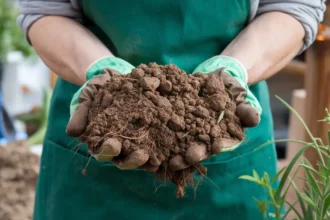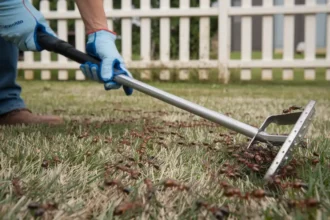Introduction
The prayer plant (Maranta leuconeura) is a unique and easy-to-grow houseplant. It makes a great and beautiful addition to any indoor garden.
It has beautiful decorative foliage that sets it apart from the other species of Maranta, such as Calathea, Ctenanthe, and Stromanthe.
Prayer plants are easy to care for if you know what they need to grow. In this care guide, we will teach you how to grow and care for your prayer plants.
What Are Prayer Plants?
Before we delve into how to care for prayer plants, let’s take a quick look at what prayer plants are.
Prayer plants fold up their leaves when the night falls as if they are praying. Hence, the name “Prayer plant.” They are herbaceous and perennial plants.
The plant has many varieties, including Calathea, Ctenanthe, and Stromanthe, but the most common species is Maranta. Some come with red veining on the leaves and beautiful midrib splotches.
The four most common types of prayer plants are the Black prayer plant with silver-blue leaves, the Herringbone plant (Maranta leuconeura var. erythroneura), the Lemon lime prayer plant, and the Rabbit’s foot prayer plant (Maranta leuconeura var. kerchoveana)
The prayer plant is slow-growing and thrives in high humidity environments, which makes it ideal for terrariums. They can also be grown in hanging baskets, larger pots, or in the garden bed.
It requires enough sunlight and will not open its leaves during the day if it doesn’t receive enough light. Also, Maranta leuconeura can grow up to a maximum height of 30cm at maturity.
Prayer plants are one of the most beautiful tropical houseplants, thanks to their beautiful decorative leaves. Prayer plants’ growing season is typically late spring to early fall.
While they are very easy to grow, prayer plants have their specific needs to thrive. Whether you have grown one indoors in a flower pot, or outdoors in a raised garden bed, let’s move on to the best prayer plant care tips.
How To Care For Prayer Plants?

Although there are several varieties of prayer plants, all of them require more or less the same type of plant care, which includes the following:
Avoid over-watering the plant
Although prayer plants like moist soil, don’t overwater them – irrespective of where you grow the plant. Overwatering leads to root rot and fungal problems, which can cause the leaf tips to turn yellow or fall off.
Also, don’t water your plant with cold water. Use water at room temperature or slightly warmer water. However, the water shouldn’t be warmer than 80°F. We recommend using tap water or water from a solar heater.
Nevertheless, water the plant frequently, especially during the growing season and when the topsoil becomes dry. The topsoil must not dry out completely.
Fertilize your prayer plant regularly
Apply a “water-soluble houseplant” fertilizer to your plant every two weeks or so, especially during its growing season. In winter, fertilize only about once a month.
Avoid applying too much fertilizer, as this can lead to the browning of leaves or the eventual death of the plant. Before application, dilute the fertilizer to half-strength.
Use the right garden soil
Get the right garden soil for your plant. If you practice container/pot gardening, you can use the regular potting soil as it works fine for prayer plants.
However, ensure that the pot/container has drainage holes and is filled with well-draining and airy potting mix.
You can also make your ideal garden soil by combining loam soil, peat moss, coarse sand, and a little perlite. Adding too much perlite can lead to fluoride burn, resulting in brown leaves.
Keep the plant in a humid area
If you grow your prayer plant indoors, you may need a humidifier to maintain the humidity around the plant. Keeping your plant in an environment that is too dry can lead to brown tips on the leaves.
If you can’t afford a humidifier, keep your plants around your bathrooms. These areas provide natural humidity and are good spots for prayer plants.
Repot the plant when necessary

This is only applicable to container gardening.
You need to repot your prayer plant once its roots start to extend out of the drainage holes in its pot. Also, if you notice that the plant has stopped growing or the soil requires constant watering, it’s time to repot.
Note that prayer plants don’t like being moved often because they are somewhat rootbound.
Avoid direct sunlight
Prayer plants are native to rainforests, so they like warm, partially shady areas, and they thrive in indirect light. Hence, position your plant in an area with lower light.
Don’t forget that the leaves won’t open fully during the day if the plant doesn’t receive enough light. Therefore, avoid placing your plant in a completely dark area.
Also, exposing the plant to a lot of direct sunlight would cause the green leaves to fade in color.
Prune only if necessary
Typically, prayer plants don’t need regular pruning. Prune only to create a bushier appearance and change the plant’s growth pattern. You should also trim off dead leaves.
The best time to prune your prayer plant is in the spring or fall, and pruning should be done using sterilized garden scissors or shears.
Treat pests and diseases
Spider mites and mealybugs are common pests of prayer plants. Deter these pests by spraying the plant lightly with neem oil.
Because prayer plants prefer high humidity and moist soil, they are prone to fungal diseases. To prevent infections, avoid overwatering, use well-draining soil, and keep the leaves up away from water.
These are the necessary tips to care for your plants.
If you have a healthy prayer plant and want a garden full of healthy plants, you can take advantage of propagation. You can propagate the original plant by taking stem cuttings or dividing the whole plant.
Conclusion
Prayer plants are becoming quite popular houseplants, and they are relatively easy to care for. By following the basic care tips explained above, you can be sure that your prayer plant will thrive and bring beauty to your garden or home.
Frequently Asked Questions (FAQs)
Yes, you can grow prayer plants indoors. In fact, they will thrive in indoor conditions. Typically, prayer plants require tropical conditions that can be hard to achieve outdoors.
Yes, prayer plants grown indoors can bloom. Under the right growing conditions, a mature prayer plant will produce delicate white and light pinkish-purple flowers in the spring and summer.






